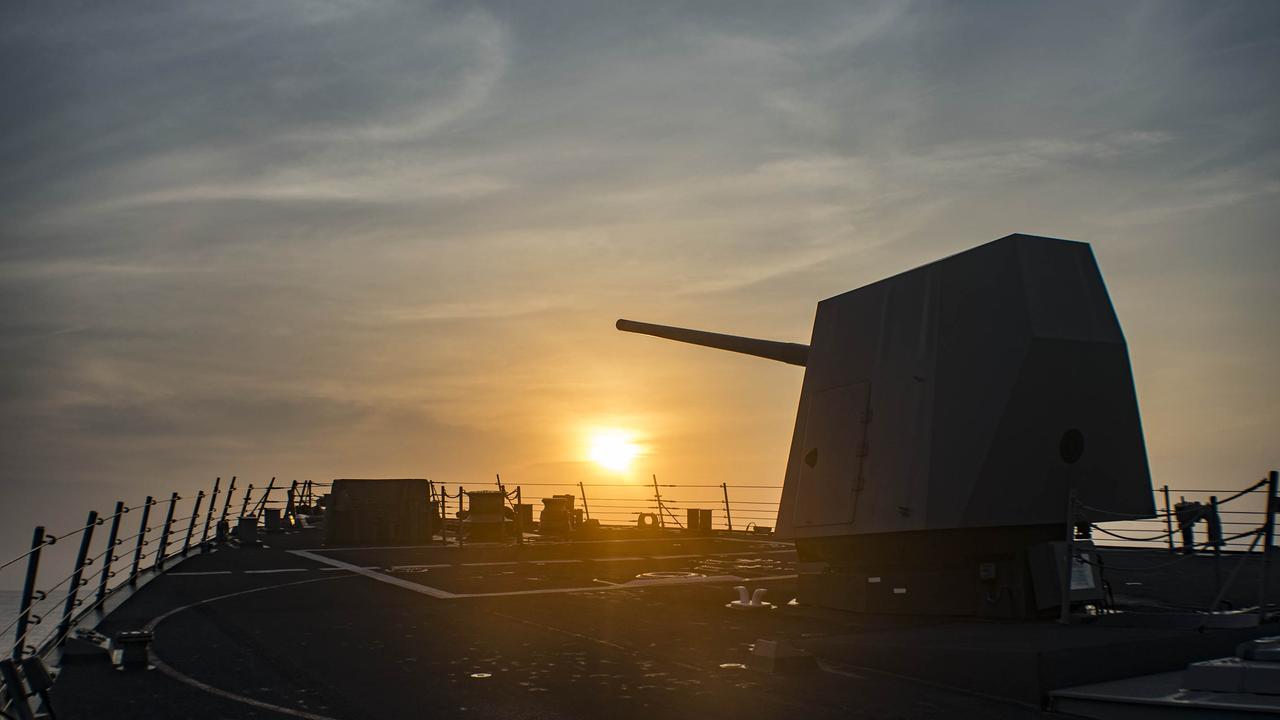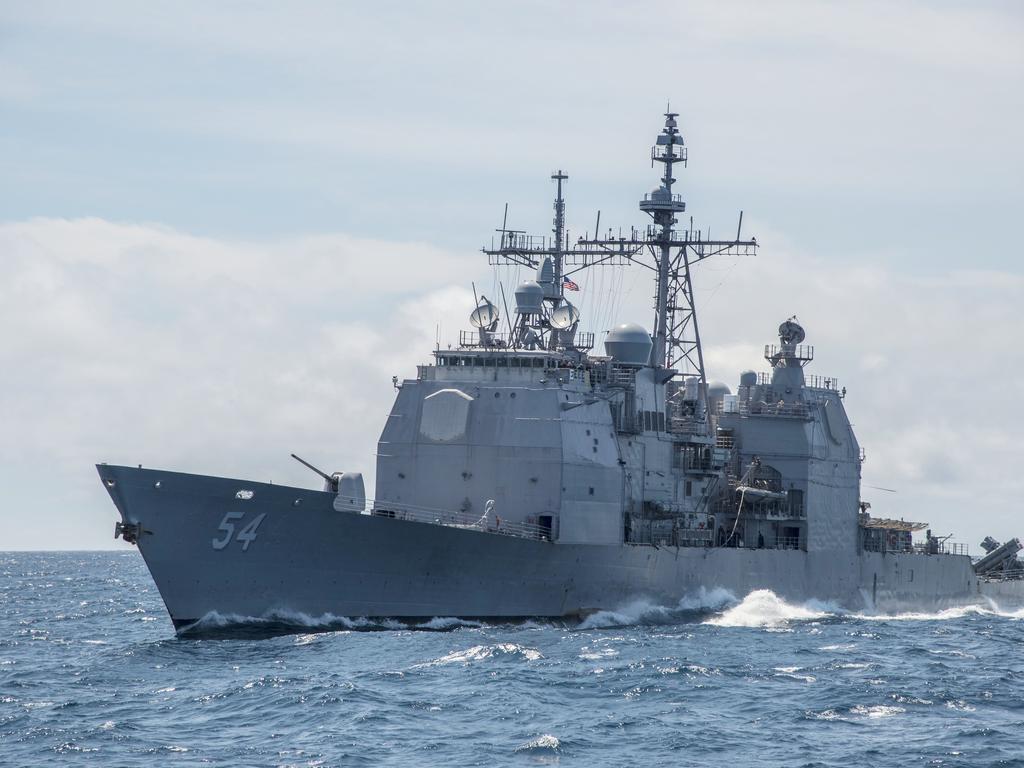US Navy says China confrontation was ‘safe but unprofessional’ as Philippines threatens war over resource dispute
THE US Navy admits a standoff between its warships and Chinese forces earlier this week was tense as the Philippines declares it is ready for ‘war’.

CHINESE warships and aircraft scrambled to confront a ‘freedom of navigation’ exercise in the disputed Parcel Islands earlier this week was ‘safe but unprofessional’, the US Navy says.
Reading between the lines, military analysts generally accept this phrasing as meaning the Chinese ships and aircraft manoeuvred forcefully and unpredictably — but did not pose a risk of collision.
Meanwhile, Philippines President Rodrigo Duterte has said Beijing will have crossed a red line if it unilaterally acts to mine the natural mineral and oil resources within the contested waters of the South China Sea.
“(China) set some red lines, we set some red lines,” Foreign Minister Alan Peter Cayetano said in a speech yesterday. “The President has already said that. If anyone gets the natural resources in the Western Philippines Sea, South China Sea, he will go to war. He said, “Whatever happens, happens.” He will go to war,” Cayetano said.

TENSE STANDOFF
Beijing earlier this week declared it had dispatched its own forces to ‘warn off’ the USS Higgins and USS Antietam which sailed within the 12 nautical mile (22km) national sovereignty radius of several islands claimed by China — including the heavily fortified Woody Island.
The US Navy’s “safe but unprofessional” assessment of the encounter reveals China is becoming increasingly bold and assertive in establishing its expansionist territorial claims.
RELATED: US warns ‘there will be consequences’ for China
The United States and much of the rest of the world do not recognise Beijings assertion that it owns almost the entire South China Sea — as defined by its ‘nine-dash-line’ on the region’s map. These have been rejected by an international court of arbitration as having no foundation.
China seized control of the Parcel Islands from Vietnam in 1974. Several have since been heavily developed as part of Beijing’s campaign to create an extensive chain of island fortresses to enforce its claims.
Beijing insists the US warships entered the Parcels waters “without the permission of the Chinese government”.
In response, it “immediately dispatched warships to identify and inspect the American ships according to law, and warned them to depart.” The US Navy says its ships were merely traversing international waters, as was their right.
RELATED: China moves missiles, fighters to fortress islands
The US warships arrived in the Parcels barely a week after Beijing for the first time landed its nuclear-capable H-6K bombers on Woody Island’s military-grade airfield. Several interceptor fighters were also seen on its tarmac. And fresh satellite photographs reveal the presence of an array of additional anti-ship and anti-air missile systems now active on the islands.

MIXED MESSAGES
Since Philippines President Duterte took office in 2016, he’s been giving mixed messages about his nation’s relationships with China and the United States.
He’s previously bluntly stated there was little the Philippines could do in the face of an expansionist China. Last month, he even declared that he ‘loved’ China’s president-for-life Xi Jinping.
His government has been attempting to establish a joint resource exploitation agreement with Beijing. The seabed surrounding the disputed Spratly Islands are believed to contain oil and natural gas reserves.
RELATED: US admiral warns — ‘only war can stop Beijing now’
But Foreign Minister Cayetano said during his speech that he would “file a protest” over Beijing’s recent militarisation of its illegal South China Sea outposts and artificial islands.
“We are taking all diplomatic actions at the right time,” he said.
He was careful not to just blame Beijing, however. His comments included veiled criticism of Vietnamese and US actions.
If there is more than one country militarising, and it’s not only the islands, if huge navies are sailing through the area, is that not militarisation?” he said. “So we don’t even have a definition of militarisation.”

ACTIONS AND REACTIONS
The United States earlier this month ‘disinvited’ China from its biannual RIMPAC naval exercises. These assemble warships and aircraft from all across the Pacific and Asia to conduct relationship-building joint manoeuvres.
“China’s behaviour is inconsistent with the principles and purposes of the RIMPAC exercise,” a Pentagon spokesman said. The act was described as “an initial response to China’s continued militarisation of the South China Sea”.
Beijing has expressed its displeasure at the move, saying it was ‘unhelpful’.
EXPLORE MORE: Can China defeat the United States in the South China Sea?
Meanwhile, US Defense Secretary Jim Mattis says his forces would continue to confront China’s militarisation of the South China Sea islands.
“When they (Chinese) do things that are opaque to the rest of us, then we cannot co-operate in areas that we would otherwise co-operate in,” Mattis told media aboard a navy aircraft carrier near Hawaii yesterday.
“You’ll notice there is only one country that seems to take active steps to rebuff them or state their resentment (to) them, but it’s international waters and a lot of nations want to see freedom of navigation,” he said.




